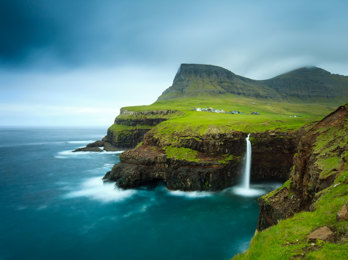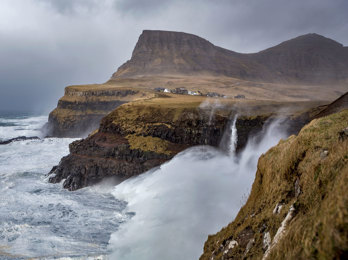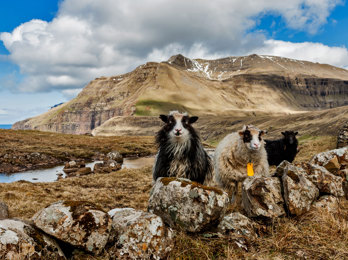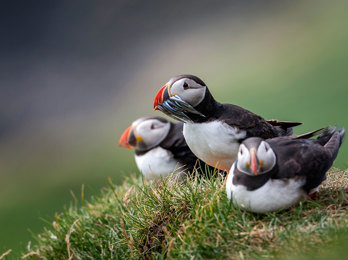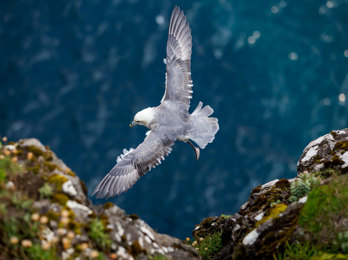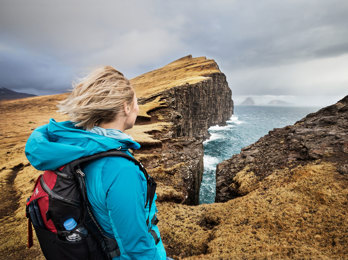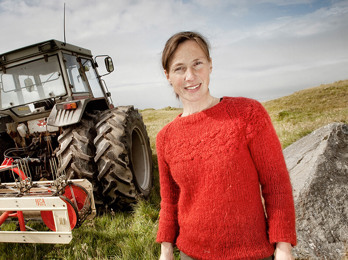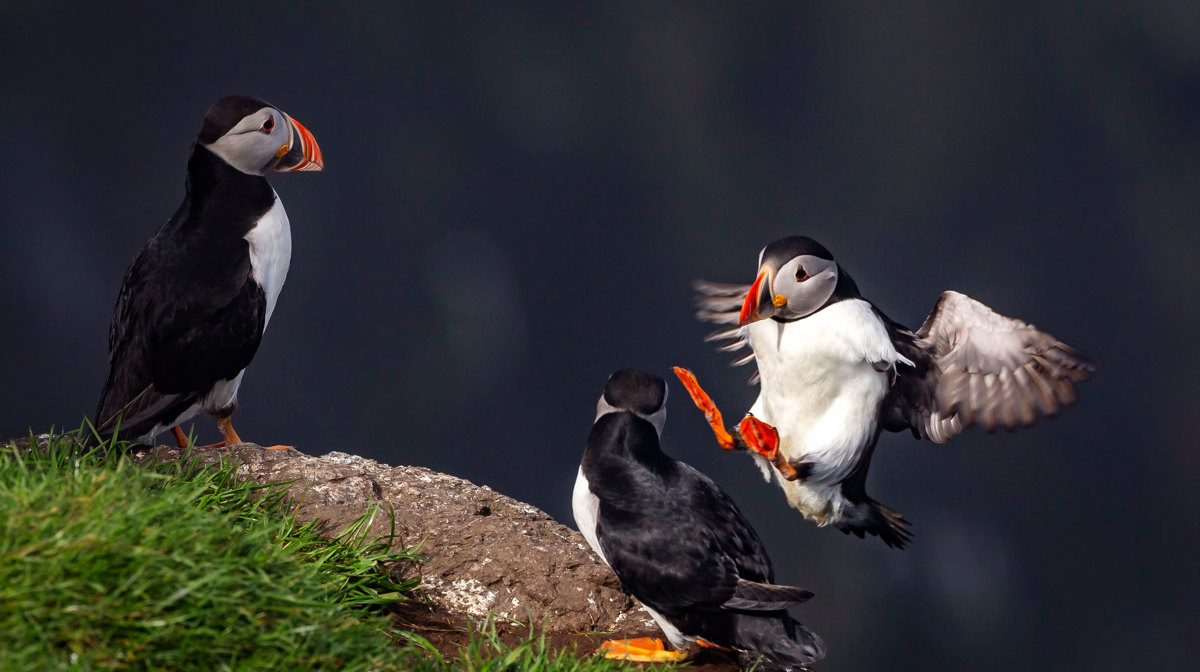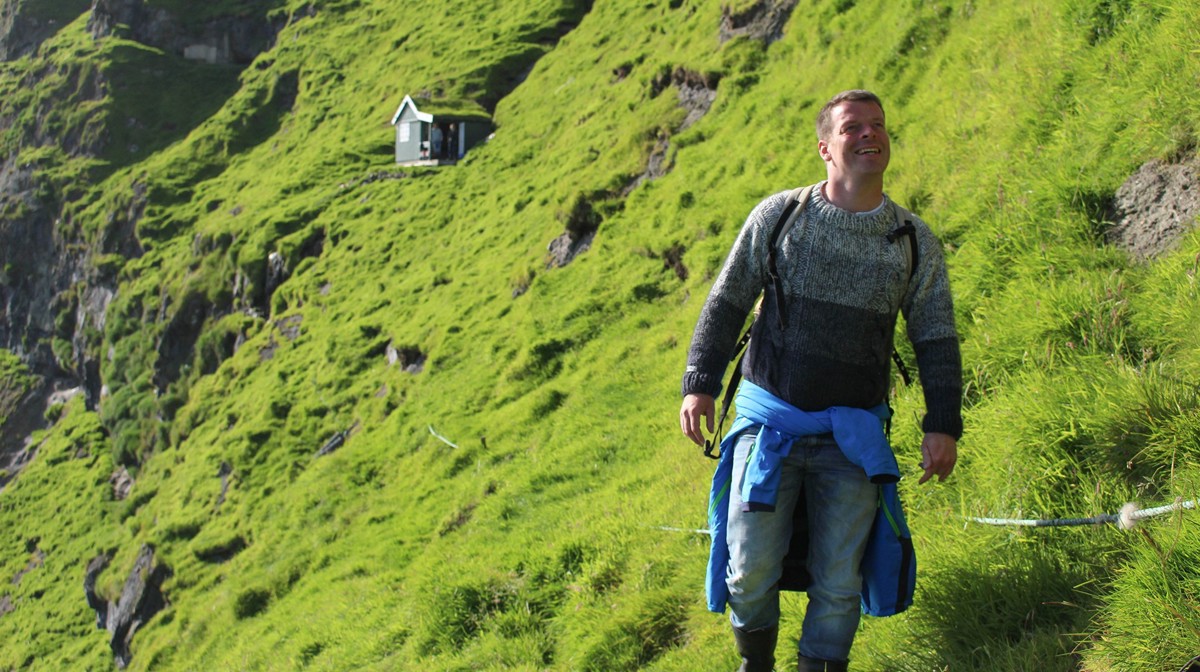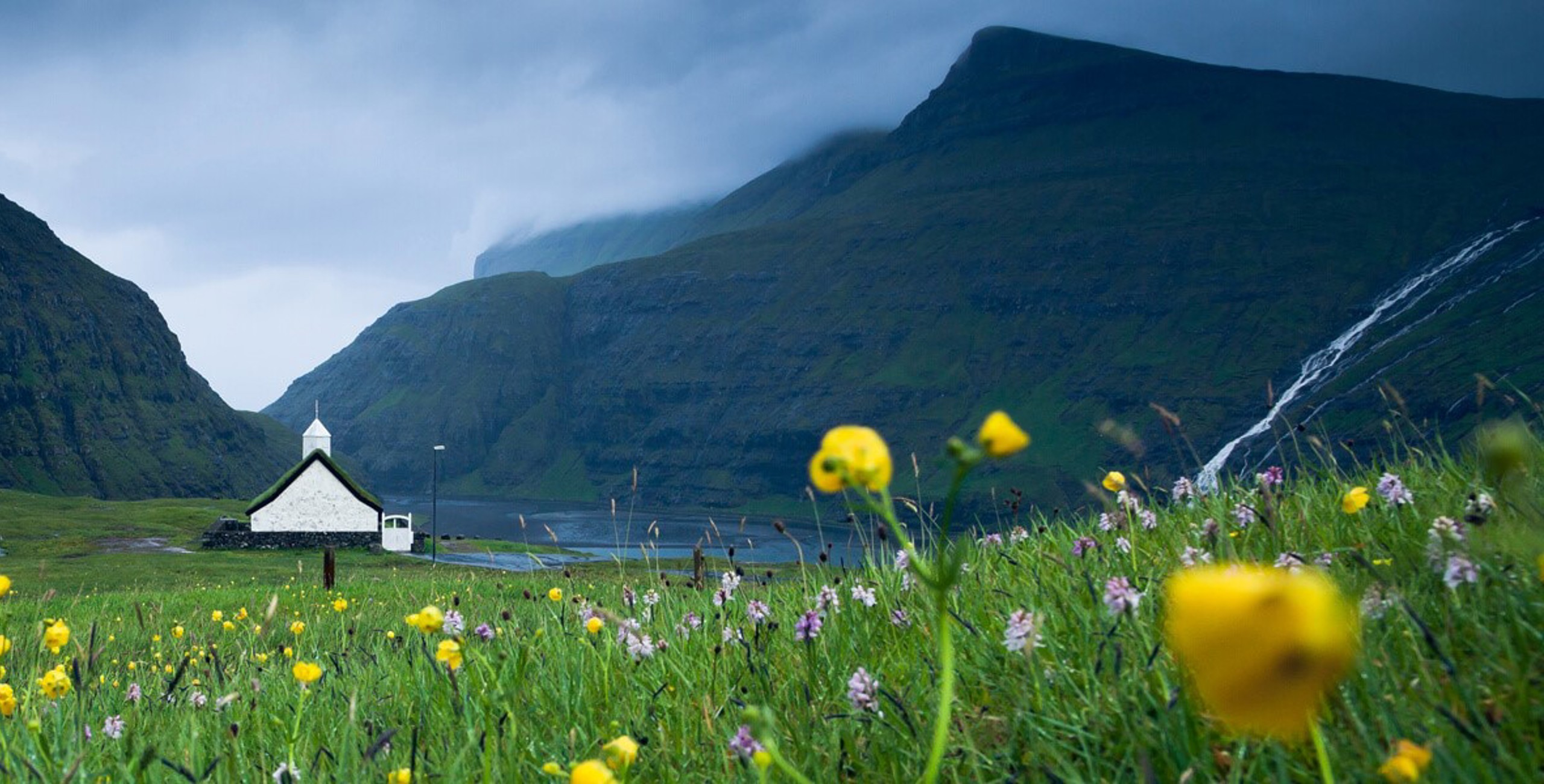
The 18 mountainous islands of the Faroe Islands were shaped by volcanic activity 50-60 million years ago. The original plateau has been restructured by the glaciers of the ice age, and the landscape eroded into an archipelago characterised by tall mountains, steep cliffs, deep valleys and narrow fjords.
Climate
The nature and weather of the Faroe Islands are ravishing and bold. The Faroe Islands are located at the doorstep of the Arctic in the great climate conveyer belt were the warm Gulf Stream meets the cold streams of Arctic waters. The variations in altitude, currents and wind makes for the unpredictable and changeable weather that characterizes the islands. You can experience rain, followed by snow, then sun, or literally all four weather seasons in one day.
Flora
At first sight, the Faroe Islands might give the impression of quite a uniform vegetation with no trees – only a tundra-like appearance. A closer look however, reveals surprising diversity.
When the ice melted after the last ice age, some 10-20.000 years ago, the islands were bare rocks with hardly any plants. As the ice disappeared and the cliffs crumbled, plants started to grow and they spread.
Some Arctic species such as “Mountain Poppy” and “Dwarf Cudweed” probably survived the last ice age on some ice-free mountaintops (nunataks), but the majority of plants growing in the Faroe Islands today arrived after the ice age.
Fauna
The fauna of the Faroe Islands reflects the islands’ remoteness, as there are few terrestrial species, but plenty of seabirds and marine animals. The marine ecosystems around the Faroe Islands are highly productive with a diverse abundance of marine species.
While humans have introduced all of the island’s land mammals, intentionally or otherwise, most of the birds and marine animals are endemic. The earliest record of fauna on the islands dates back to 825 AD, when the Irish monk Dicuilus wrote, that the Faroe Islands were full of a “variety of seabirds”.
Through the ages, the Faroese people have learnt to adapt to the harsh weather that shapes life on the islands. They have developed the skills and expertise necessary to make the most of the valuable natural resources. Consequently, the preservation of natural recourses are a matter of vital importance to the people of the Faroe Islands.
People of Nature
Visitors to the islands are generally surprised and impressed by the nature that meets them in the North Atlantic. After a while, getting to know the islanders, they will also get a sense of nature´s influence on the local culture. Some guests, staying for longer periods of time, might even gain an understanding of the islanders' cultural construction of the nature surrounding them. The setting itself, being on small islands far from the continent, creates a feeling of freedom and separation from the `rest of the world´. The fact that there are eighteen islands – not one lonely – opens for a society embracing large internal cultural variation as poetically narrated by the beloved author William Heinesen when he says that the Faroes are a like a “grain of sand on a dance floor”, but that a closer look at the grain will uncover a whole universe of small picturesque villages and valleys, mountains and fjords. From inside, in other words, the Faroes do not seem small and homogeneous at all.
The ocean is never far away as no place in the Faroe Islands has a distance of more than five kilometres to the coast. All villages are located by the seashore, with only one exception - Vatnsoyrar is lying by the islands' largest lake. The view of the open and infinite ocean is thus part of the everyday life of the islanders. Seen from the sea the islands look like green pyramidal peaks of huge underwater mountains. The rest of the land is hidden under the surface. The ocean symbolizes all the powers of life; it is dangerous yet unavoidable. “The ocean sang over me a lullaby, the surf put me to sleep”, says Jákup Dahl, in a romantic song of man´s lifelong relation to the sea. The sea symbolizes life and destiny.
